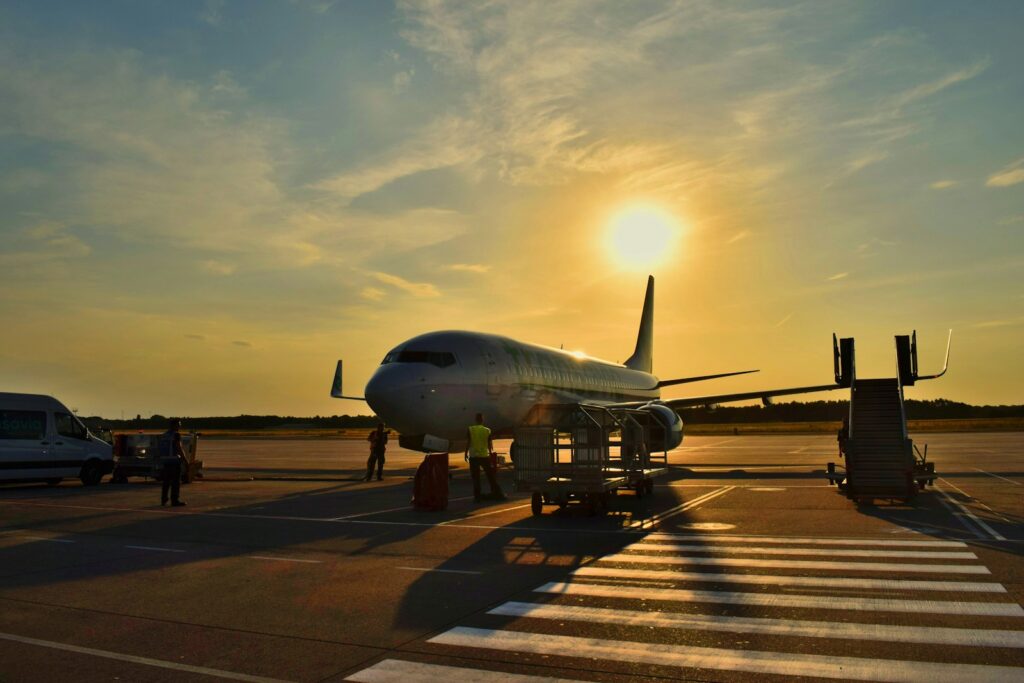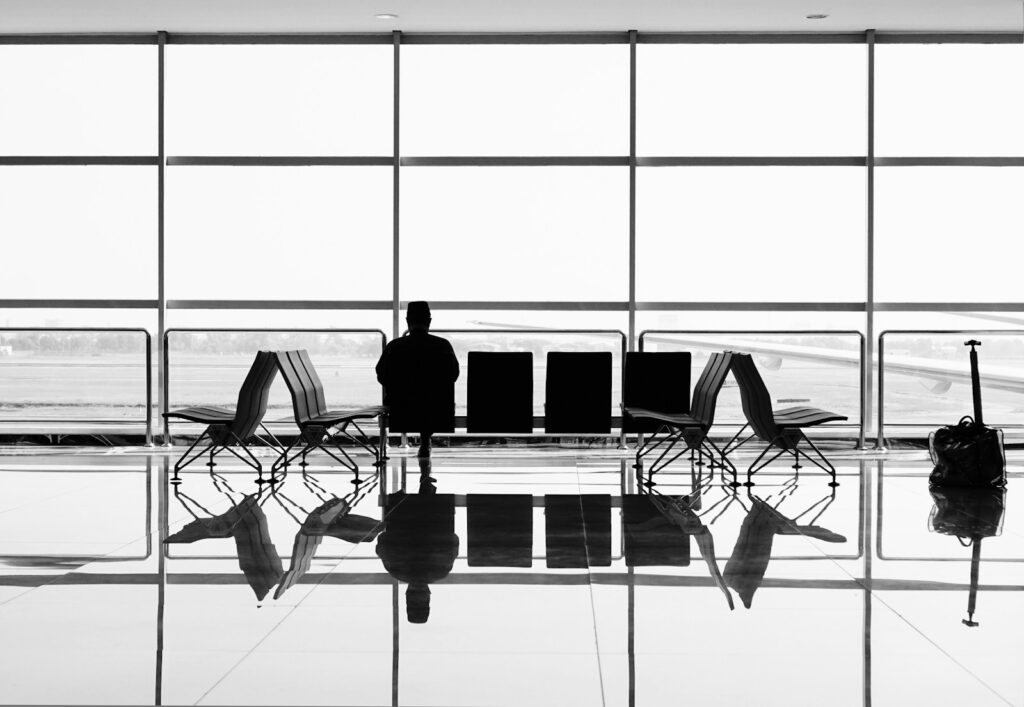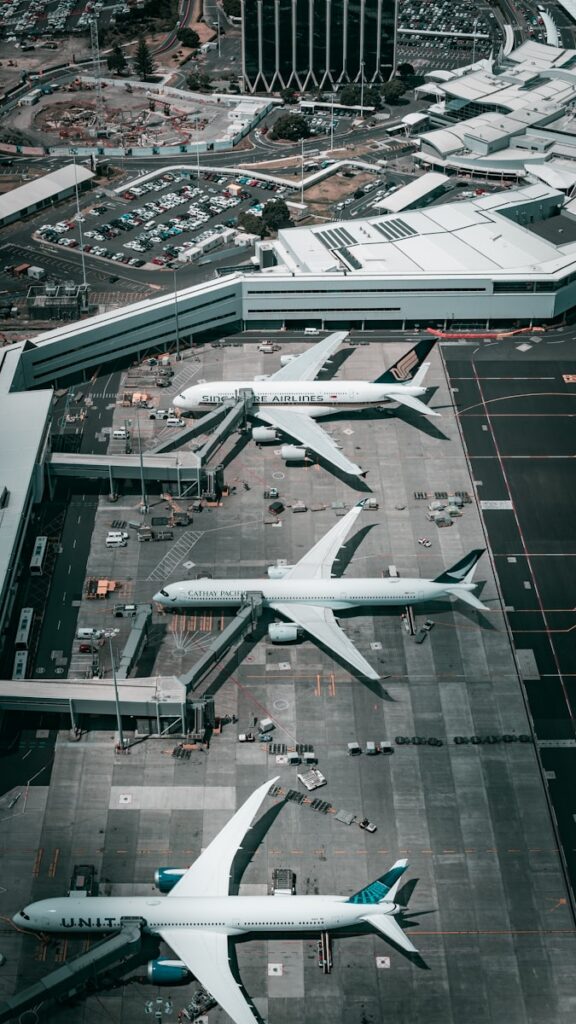
Few elements of holiday travel are as frustrating as unexpected flight delays. With millions of Americans planning to traverse the country during the upcoming holiday season, understanding where and why delays occur can significantly impact travel experiences. The Transportation Security Administration predicts this will be “the busiest holiday season on record,” making informed planning more critical than ever.
While many travelers anticipate winter weather to be the primary culprit for disruptions, recent analyses reveal a more nuanced picture. Studies by Upgraded Points and LendingTree, leveraging data from the Bureau of Transportation Statistics (BTS), highlight airports that consistently face high percentages of delayed departures during the holiday period, often in regions not traditionally associated with severe winter conditions. This data offers crucial insights for passengers preparing for their journeys.
This comprehensive guide delves into the top U.S. airports that have demonstrated the highest rates of flight delays during the holiday season. By examining the figures and contextual information from these detailed reports, travelers can gain a clearer perspective on potential challenges and consider strategies to mitigate the impact of unforeseen delays, ensuring a smoother travel experience during peak periods.
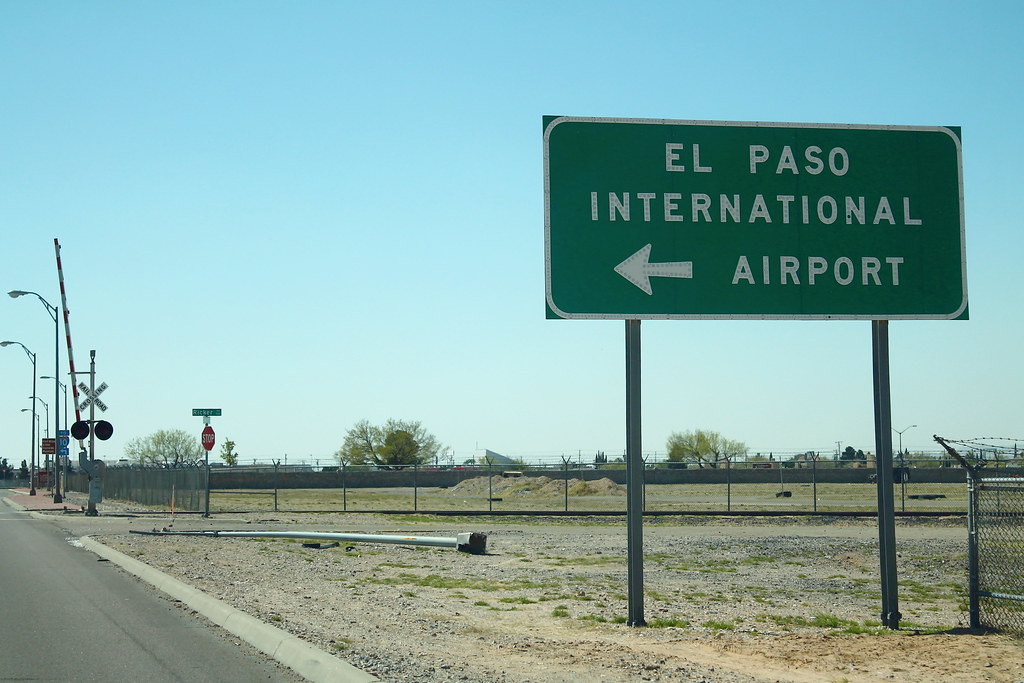
1. **El Paso International Airport (ELP) in Texas: 32.8%**El Paso International Airport, located in Texas, stands out with the highest percentage of delayed departures during the holiday season, according to an analysis by Upgraded Points. A significant 32.8% of flights from ELP experienced delays during the holiday period, as reported by the study. This places it at the forefront of airports where travelers are most likely to encounter disruptions during peak festive travel.
The prevalence of delays at ELP underscores a broader trend noted by travel analysts: airports in regions with traditionally milder climates often appear on lists of highly delayed hubs. This phenomenon challenges the common assumption that only airports in “winter wonderlands” are prone to significant holiday flight delays. The data suggests that other operational factors, distinct from heavy snowfall or ice, play a substantial role in these delays.
While specific causes for ELP’s high delay rate are not detailed in the context, the Upgraded Points study generally notes that “the large majority of delayed flights are caused by other factors, such as air carrier delays, an aircraft arriving late, and national aviation system delays.” This indicates that a combination of airline operational issues, flight scheduling complexities, and broader air traffic management challenges likely contribute to El Paso’s elevated delay figures during the busy holiday period.
Travelers departing from or connecting through El Paso International should be aware of this historical data. Given the 32.8% delay rate, preparing for potential disruptions by booking early morning flights, considering non-stop routes, and allowing ample layover time for connections could be prudent measures to reduce travel stress during the holidays.
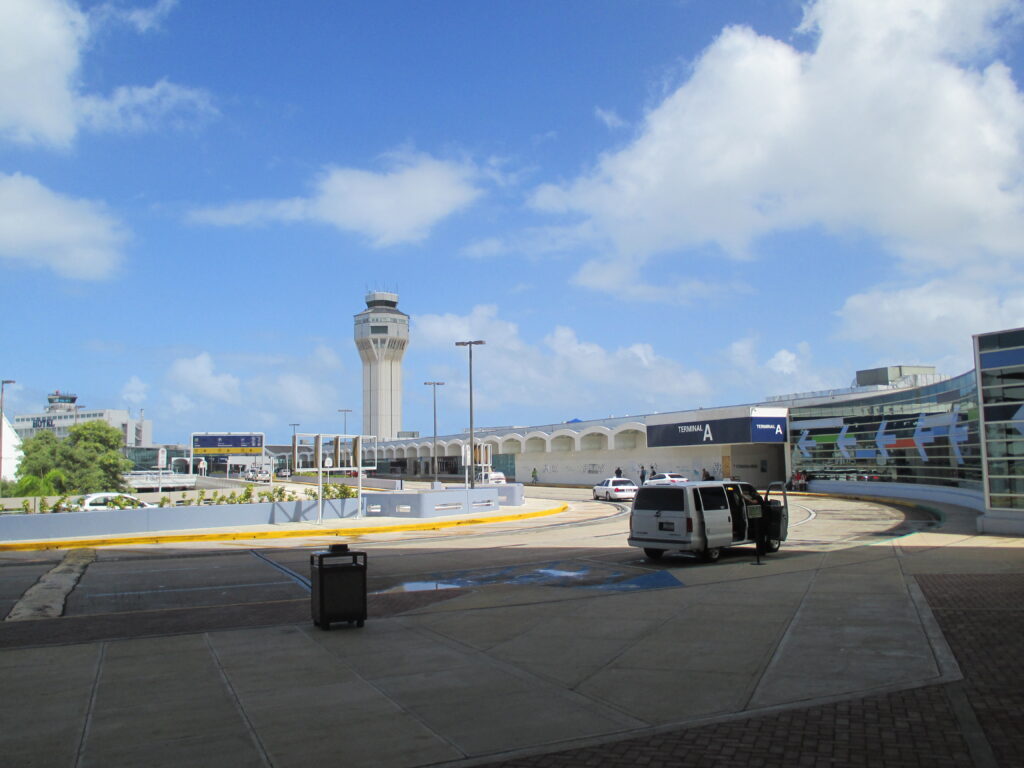
2. **Luis Muñoz Marín International Airport (SJU) in Puerto Rico: 30.7%**Luis Muñoz Marín International Airport, serving San Juan, Puerto Rico, ranks as the second U.S. airport with a notably high percentage of holiday flight delays, with 30.7% of its departures experiencing setbacks. This data point, derived from the Upgraded Points analysis, emphasizes that geographical location in a tropical climate does not necessarily exempt an airport from significant travel disruptions during the busy holiday season.
The consistent appearance of airports in warmer climates on lists of those with high delay rates highlights that weather, while a factor, is not the sole determinant of operational efficiency. In the case of SJU, its status as a major Caribbean hub for both domestic and international travel means it handles a substantial volume of flights, especially during periods of high demand like the holidays.
Similar to other airports on this list, the specific reasons for SJU’s high delay percentage are not provided in the context. However, the overarching causes identified in the broader research, such as “air carrier delays, an aircraft arriving late, and national aviation system delays,” are likely contributors. The intricate network of air traffic and airline logistics can cascade delays across the system, impacting even seemingly idyllic destinations.
Travelers utilizing SJU during the holidays should factor this 30.7% delay rate into their planning. Adopting strategies like monitoring flight statuses closely, utilizing airline apps for real-time updates, and maintaining flexible itineraries where possible can help manage the inevitability of potential delays when flying through this bustling Caribbean gateway during peak travel times.

3. **Albuquerque International Sunport (ABQ) in New Mexico: 30.6%**Albuquerque International Sunport in New Mexico records a significant holiday flight delay rate of 30.6%, placing it among the top three U.S. airports for such disruptions. This statistic, from the Upgraded Points study, further reinforces the pattern of airports in mild or desert climates facing substantial challenges during the busy winter holiday season, contrary to popular belief.
New Mexico’s climate, while experiencing winter, is not typically characterized by the extreme, widespread snowstorms seen in some northern states. Yet, ABQ’s high delay percentage suggests that factors beyond heavy snowfall or ice are primary drivers of holiday travel headaches. The Upgraded Points analysis explicitly states that “the most flight delays actually happen at airports in states with mild weather,” directly applying to locations like Albuquerque.
The root causes for ABQ’s delays during the holidays are likely intertwined with the broader operational issues that affect many U.S. airports. These include the complex interplay of “air carrier delays, an aircraft arriving late, and national aviation system delays,” as identified by Audrey Small, a research assistant with Upgraded Points. These systemic issues can create bottlenecks and ripple effects throughout the national aviation system.
For those flying through Albuquerque International Sunport this holiday season, acknowledging the 30.6% delay probability is essential. Proactive measures such as booking flights during less congested times, ideally early mornings, and considering travel insurance that covers delays can provide peace of mind. Preparing for longer waits at the airport with essentials like entertainment and snacks is also a practical recommendation.
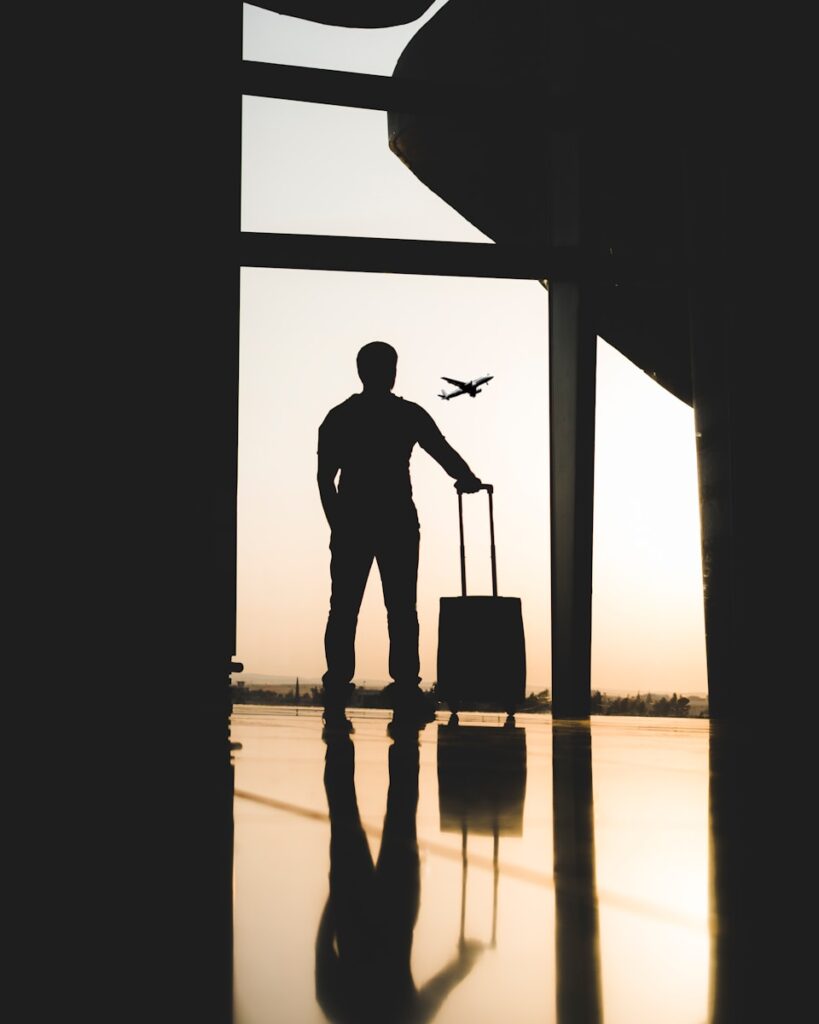
4. **San Antonio International Airport (SAT) in Texas: 30.3%**San Antonio International Airport in Texas is another significant entry on the list of airports with high holiday flight delay rates, experiencing delays in 30.3% of its departures, according to Upgraded Points. This figure places SAT firmly within the top tier of airports where holiday travelers are most likely to encounter disruptions, highlighting the challenges faced by key Texas hubs during peak travel periods.
LendingTree’s analysis also identified San Antonio International among the worst for “winter holiday delay rate,” reporting a 28.2% delay rate for the period between 2015 and 2023. The higher figure from Upgraded Points, 30.3%, further underscores the consistent nature of delays at this airport during the festive season. The presence of multiple Texas airports on various “worst-of” lists indicates a regional susceptibility to holiday travel setbacks.
A potential contributing factor, as suggested by the LendingTree analysis, is the cascading effect of delays originating elsewhere. “If someone is flying from Chicago, New York or Boston and gets delayed flying into Fort Lauderdale or San Antonio because of the weather, it begins a cascade of delays that can carry throughout the region and country.” This illustrates how even airports in less severe winter climates can be impacted by events far removed from their immediate vicinity.
Travelers planning to fly through San Antonio International during the holidays should remain vigilant. With a delay rate exceeding 30%, it is advisable to prioritize early departures, which statistically tend to experience fewer delays, and to build in buffer time for connecting flights. Keeping an eye on flight status updates via airline communications will be a critical step for managing expectations.
5. **William P. Hobby Airport (HOU) in Houston, Texas: 30.2%**William P. Hobby Airport (HOU) in Houston, Texas, registers a 30.2% delay rate for departures during the holiday season, according to the Upgraded Points study on “Highest Percentage Of Delayed Departures.” This places HOU as a significant point of potential disruption for travelers during the busy festive period, making it one of the airports where delays are notably more common.
It is important to clarify a distinction within the provided data regarding HOU. While the Upgraded Points study cited above lists HOU with a 30.2% *total departure delay* rate for the holidays, another section of the context from the same source identifies it as one of the “least weather-delayed airports during the holiday months” with a 12.3% weather-related delay rate. LendingTree’s analysis also reported a “worst winter holiday delay rate” for HOU at 28.8%. This discrepancy highlights the difference between overall flight delays and those specifically attributed to weather.
The primary focus of this article is on overall flight delays, as indicated by the topic. Therefore, the 30.2% figure, representing the total percentage of delayed departures during the holiday season, is the most relevant metric for HOU in this context. The lower *weather-related* delay rate, despite facing the “same weather as IAH” (George Bush Intercontinental Airport), is attributed to HOU’s significantly smaller passenger throughput, as “Hobby only reporting just north of 10 million” passengers annually compared to IAH’s “around 40 million.” However, this weather advantage does not prevent it from having a high overall delay rate.
Given HOU’s substantial 30.2% overall holiday departure delay rate, travelers should plan accordingly. Adopting strategies like arriving well in advance of departure, opting for direct flights to minimize connection risks, and packing essentials in carry-on luggage for easy access during unexpected waits are practical steps to manage potential disruptions. Early morning flights are also generally recommended as a way to potentially avoid the compounding effects of delays throughout the day.
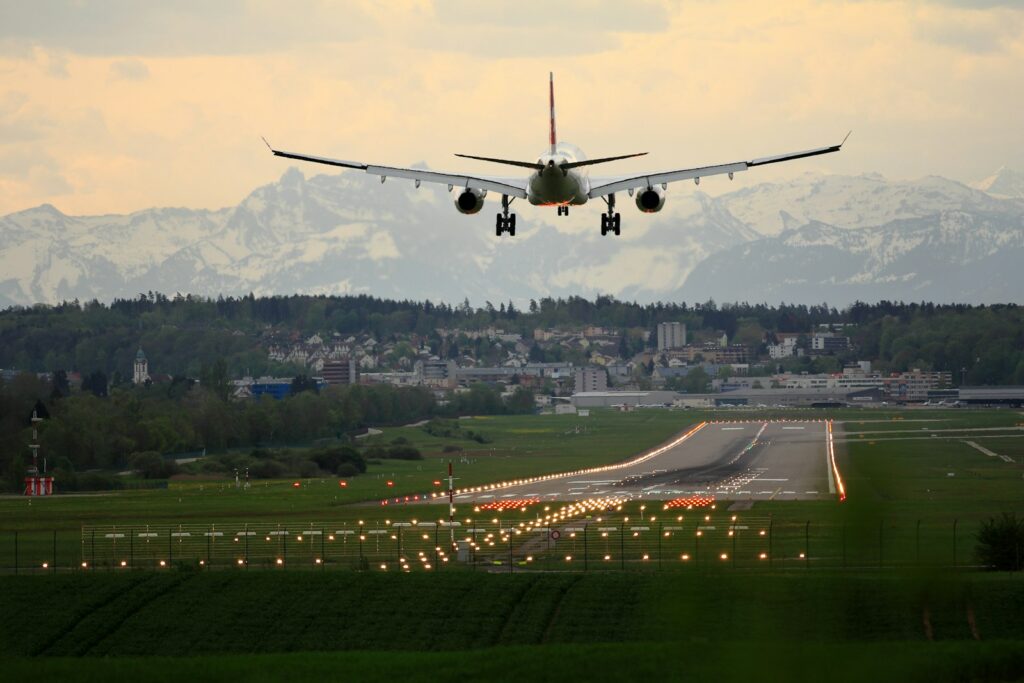
6. **Will Rogers World Airport (OKC) in Oklahoma: 30%**Will Rogers World Airport (OKC) in Oklahoma experiences a 30% delay rate for departures during the holiday season, based on the Upgraded Points analysis. This percentage firmly positions OKC among the leading airports where holiday travelers are most likely to encounter significant flight disruptions. The inclusion of an Oklahoma airport on this list further demonstrates that high delay rates are not exclusive to major coastal or heavily populated hubs.
The data for OKC aligns with the broader finding that “the most flight delays actually happen at airports in states with mild weather,” as indicated by Audrey Small from Upgraded Points. While Oklahoma can experience varied winter weather, its designation among the top delayed airports during the holidays suggests that general operational factors, rather than solely severe weather events, play a more dominant role in these disruptions.
As with other airports on this list where specific local causes are not detailed, the delays at OKC are likely influenced by the systemic issues that plague the national aviation system during peak travel. These include factors such as “air carrier delays, an aircraft arriving late, and national aviation system delays.” These interconnected challenges can lead to a domino effect, impacting flight schedules across different regions and airports.
Travelers departing from or arriving at Will Rogers World Airport during the holiday season should anticipate potential delays, given the 30% reported rate. Proactive measures such as utilizing flight tracking apps, subscribing to airline notifications, and being prepared for longer wait times can help mitigate stress. Flexibility in travel plans and having backup arrangements, if possible, are also valuable considerations for navigating the busy holiday airwaves.
Following the trend of airports in states with generally mild weather, several more hubs demonstrate concerning rates of flight delays during the bustling holiday season. These airports, often located in regions less associated with heavy snow or ice, reveal the multifaceted nature of air travel disruptions, where factors beyond immediate local weather frequently dictate on-time performance.

7. **Oakland International Airport (OAK) in California: 29.8%**Oakland International Airport, situated in California, ranks as the seventh U.S. airport with a high holiday departure delay rate, reaching 29.8% according to an Upgraded Points analysis. Its inclusion on this list further solidifies the pattern that many airports in sunny or mild-weather states frequently encounter significant operational challenges during peak travel periods, challenging the assumption that only traditional winter weather zones are problematic.
While California is known for its temperate climate, especially in the Bay Area, OAK’s nearly 30% delay rate underscores that regional weather isn’t the only factor at play. LendingTree’s separate analysis, which focused on winter holiday delay rates between 2015 and 2023, also identified Oakland International among the worst, with a 27.4% delay rate. This consistency across different studies emphasizes its susceptibility to holiday travel disruptions.
The underlying causes for OAK’s elevated delay figures during the holidays are likely consistent with the broader systemic issues impacting air travel nationwide. These commonly include ‘air carrier delays, an aircraft arriving late, and national aviation system delays,’ which can lead to cascading effects. Such operational complexities, rather than direct local weather, often create bottlenecks in the busy airspace around major metropolitan areas like the San Francisco Bay.
For travelers planning journeys through Oakland International during the holiday season, awareness of this 29.8% delay probability is crucial. Proactive strategies such as checking flight status updates regularly, considering travel insurance, and allowing ample time between connecting flights can help manage potential inconveniences. Booking early morning flights also tends to offer a better chance of on-time departure, as delays often accumulate throughout the day.
8. **Reno-Tahoe International Airport (RNO) in Nevada: 29.7%**Reno-Tahoe International Airport in Nevada records a 29.7% holiday flight delay rate for departures, placing it among the nation’s top airports for such disruptions, as per the Upgraded Points study. While Reno is known for experiencing distinct winter conditions, its high delay rate aligns with the broader finding that ‘the most flight delays actually happen at airports in states with mild weather,’ indicating non-weather factors are highly influential.
This high percentage of delayed flights at RNO suggests that even airports that may experience some winter weather are more profoundly affected by other operational intricacies during the holiday rush. The interconnection of the national aviation system means that issues originating far away can ripple through, impacting schedules even at regional hubs like Reno. This can be particularly true when airports are operating near capacity.
As with other airports high on this list, the specific, localized reasons for RNO’s holiday delays are not detailed in the available context. However, the overarching causes identified in the research — ‘air carrier delays, an aircraft arriving late, and national aviation system delays’ — are almost certainly at play. The heavy demand of holiday travel can strain airline resources and air traffic control capabilities across the entire network.
Travelers flying through Reno-Tahoe International this holiday season should consider its nearly 30% delay likelihood when making plans. Opting for direct flights where possible can reduce exposure to multiple points of potential delay. Additionally, packing essentials in a carry-on and having flexible onward travel arrangements, if feasible, can significantly reduce stress if delays do occur.
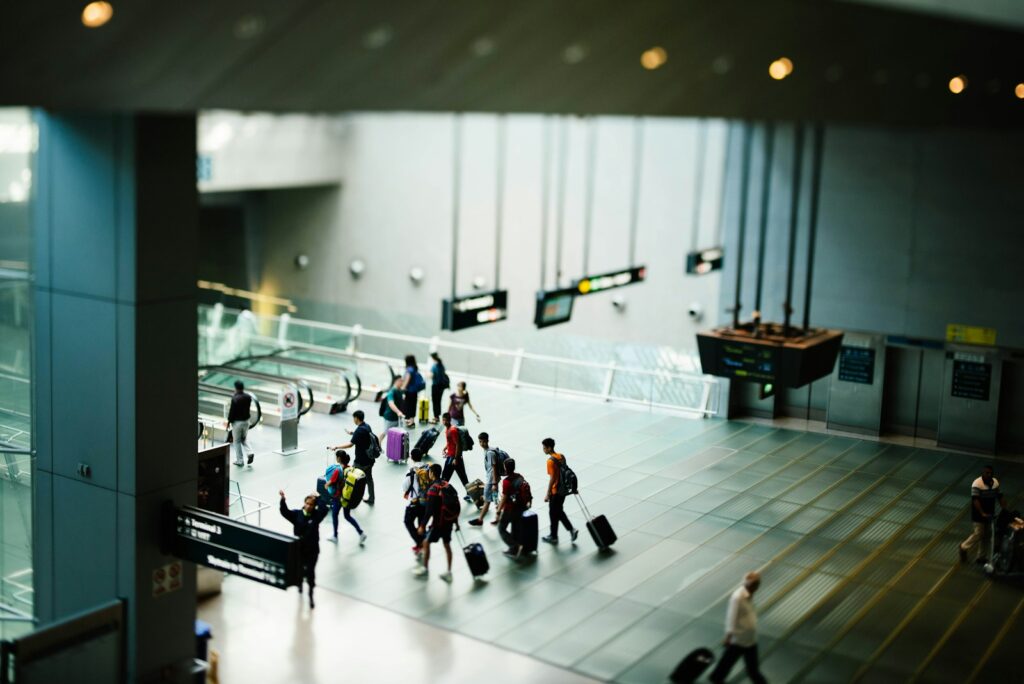
9. **Sacramento International Airport (SMF) in California: 29.3%**Sacramento International Airport in California registers a 29.3% delay rate for departures during the holiday season, according to the Upgraded Points analysis. This figure positions SMF as another key airport where holiday travelers are likely to encounter significant disruptions, further illustrating the challenges faced by California’s regional hubs during peak travel times.
The presence of multiple California airports on lists of those with high holiday delay rates challenges the conventional wisdom that only airports in severe winter climates suffer extensive disruptions. Despite Sacramento’s generally mild winters, the volume of holiday traffic and the complex interplay of airline and air traffic control operations prove to be substantial factors in its delay statistics.
LendingTree’s analysis also listed Sacramento International (SMF) with a 27.2% delay rate for the winter holiday period between 2015 and 2023, reinforcing the airport’s consistent performance in this metric. The combined data from these reports underscores that SMF is a consistent point of delay for holiday flyers, necessitating careful planning from passengers.
For those utilizing Sacramento International Airport during the holidays, a 29.3% chance of delay warrants attention. Passengers can enhance their travel experience by leveraging airline mobile apps for real-time flight status updates and adhering to the Transportation Security Administration’s recommendation of arriving well in advance of their scheduled departure. Planning for potential extended wait times is a practical approach.
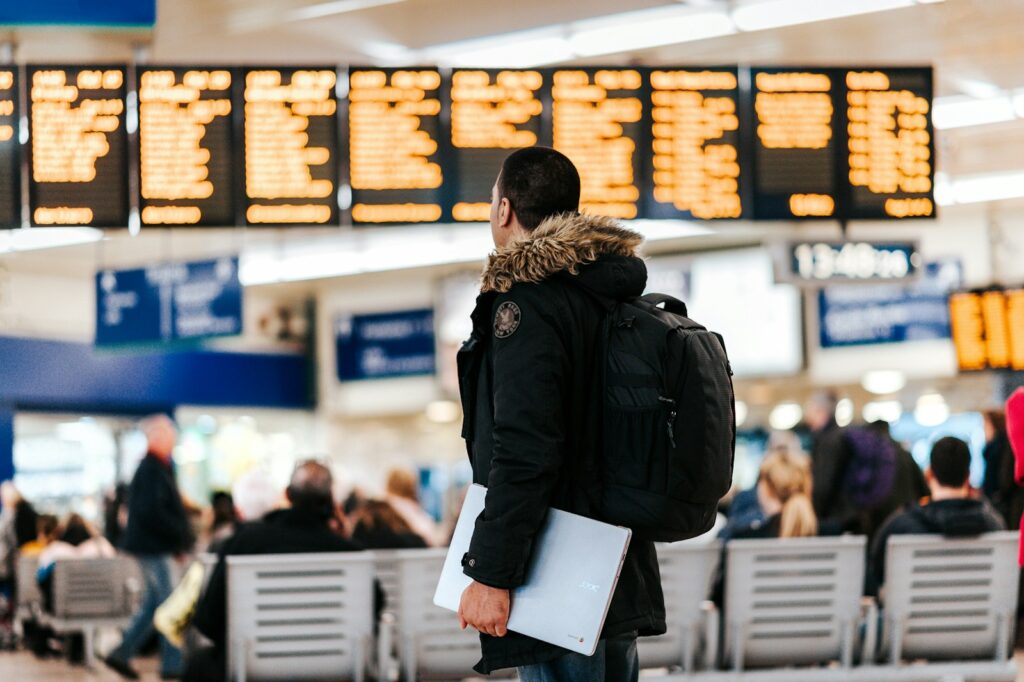
10. **Boise Airport (BOI): 29.2%**Boise Airport (BOI) in Idaho experiences a 29.2% delay rate for departures during the holiday season, based on the Upgraded Points analysis. This places BOI among the top airports where holiday travelers are most likely to face flight disruptions, indicating that smaller, regional airports also contend with significant operational pressures during the festive period.
Idaho’s climate can certainly feature winter weather, but BOI’s high overall delay rate, consistent with the broader findings, suggests that general aviation system issues and airline-specific operational challenges play a more prominent role than just local snowfall. The national interconnectedness of air travel means delays can propagate across the country, affecting diverse geographic locations.
These systemic challenges often include ‘air carrier delays,’ where an airline’s own operations lead to setbacks, ‘an aircraft arriving late,’ creating a domino effect for subsequent flights, and ‘national aviation system delays,’ which encompass broader air traffic control or infrastructure issues. During the holiday season, the increased volume of flights can exacerbate these issues at airports like Boise.
Travelers flying through Boise Airport this holiday season should be prepared for the possibility of delays. Booking flights for earlier in the day is a commonly recommended strategy, as morning flights statistically experience fewer delays. Additionally, considering routes with fewer connections and staying updated through airline communication channels can help navigate the holiday travel landscape more effectively.
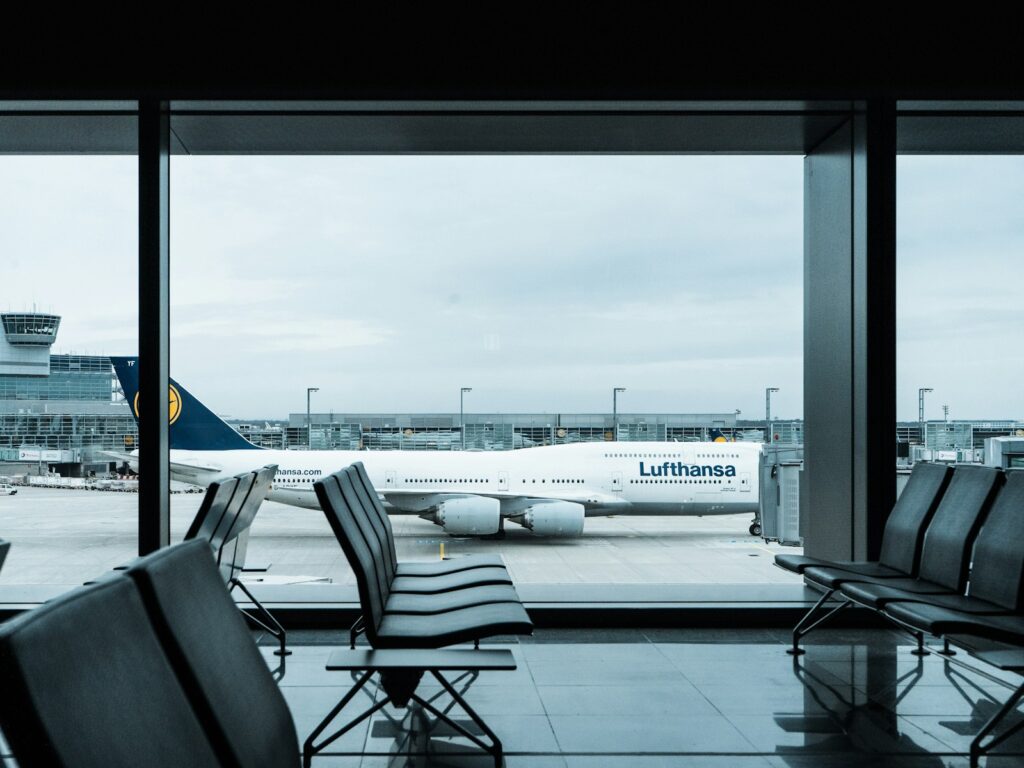
11. **Fort Lauderdale-Hollywood International Airport (FLL) in Florida: 29.0%**Fort Lauderdale-Hollywood International Airport in Florida recorded a 29.0% delay rate for winter holiday departures, as identified by a LendingTree analysis. This positions FLL as a leading airport for disruptions during the festive season, highlighting how major gateways in warmer climates are significantly impacted by the holiday travel rush, often due to factors originating elsewhere.
Its status as one of four Florida airports among the top 10 worst for holiday delays in the LendingTree study underscores a regional susceptibility to travel setbacks. The report suggests a potential contributing factor: ‘If someone is flying from Chicago, New York or Boston and gets delayed flying into Fort Lauderdale or San Antonio because of the weather, it begins a cascade of delays that can carry throughout the region and country.’ This illustrates how FLL’s sunny locale doesn’t shield it from the ripple effects of winter weather elsewhere.
The sheer volume of passengers traveling to popular Florida destinations during the holidays also contributes to operational strain. While not directly weather-related at FLL itself, the high demand for flights and the complexity of managing a packed flight schedule mean that any minor disruption can quickly escalate into widespread delays, affecting a large percentage of its departures.
For travelers departing from or arriving at Fort Lauderdale-Hollywood International during the holidays, a nearly 30% delay rate necessitates careful planning. Building in extra time for connections, monitoring flight statuses diligently, and having contingency plans for accommodation or alternative transportation can help minimize the impact of potential delays. Flexibility is key when traveling through this bustling Florida hub.
12. **Palm Beach International Airport (PBI) in Florida: 28.9%**Palm Beach International Airport in West Palm Beach, Florida, also features prominently on LendingTree’s list, with a 28.9% delay rate for winter holiday departures. This figure places PBI among the nation’s airports most prone to holiday disruptions, consistent with the challenges faced by other key Florida airports during this busy period.
Like its nearby counterpart, Fort Lauderdale-Hollywood International, PBI’s high delay rate is likely influenced by the same cascading effects from colder northern airports. Travelers seeking warmer climates often fly into these Florida hubs, making them vulnerable to delays that begin in distant, weather-impacted cities. This intricate web of interconnected flights means local weather isn’t always the primary driver of delays.
LendingTree’s findings consistently point to airports in Florida, Texas, and California as having the highest delay rates, defying the common expectation that only snowy cities would dominate such a list. PBI’s inclusion reinforces that peak holiday travel demand, combined with the ripple effects of system-wide operational challenges, creates a challenging environment for on-time performance.
Travelers using Palm Beach International Airport during the holiday season are advised to prepare for potential delays. Arriving early for flights, utilizing digital tools for real-time updates, and considering less popular flight times can marginally improve the odds of an on-time departure. Patience and preparedness are essential when navigating holiday travel through this busy Florida gateway.
Beyond these specific airport statistics, a broader look at U.S. air travel trends reveals important patterns in airline performance and the seasonal nature of delays, often highlighting the significant role of weather, even when it’s not the primary cause for every individual delay.
### **Insights into Weather-Related Airport Delays During the Holidays**
While the previous list focused on overall departure delays, a specific analysis by Upgraded Points identifies airports where weather is the most frequent cause of holiday disruptions. San Francisco International Airport (SFO) leads this category with a striking 42.3% of its holiday delays attributed to weather over the past five years. Newark Liberty International Airport (EWR) closely follows at 42.1%, and LaGuardia Airport (LGA) at 38.3%, demonstrating the significant impact of East Coast winter storms.
Seattle–Tacoma International Airport (SEA) lands fourth with 38.1% weather-related delays, often due to November rain and fog, while Logan International Airport (BOS) rounds out the top five at 31.3%, a testament to Boston’s challenging winter months. These figures underscore that for certain major hubs, inclement weather remains a dominant, direct factor in holiday flight schedules, especially for those planning travel through these particular gateways during November through January.
### **Airlines Most Affected by Holiday Weather Delays**
When examining airlines, Alaska Airlines is identified by Upgraded Points as the carrier most impacted by weather during the holiday months, with 30.2% of its delays from November through January being weather-related. United Airlines comes in second at 29.4%. Allegiant Air and Spirit Airlines also report high weather-related delay rates at 24.5% and 24.4%, respectively.
The geographic footprint of these airlines plays a significant role in their weather vulnerability. Alaska Airlines, for example, operates extensively in the Pacific Northwest and Alaska, regions frequently subject to disruptive weather conditions. United Airlines maintains major hubs at several notoriously weather-delayed airports, including Newark (EWR), Chicago O’Hare (ORD), Houston Intercontinental (IAH), and San Francisco (SFO). Conversely, Hawaiian Airlines, with its tropical base, reports the fewest weather-related delays at just 7.5%, showcasing a clear advantage in milder climates.
### **Surprising Trends in Monthly Weather-Related Delays**
Contrary to common assumptions, the Bureau of Transportation Statistics data reveals that summer months, not winter, experience the highest rates of weather-related flight delays. July leads with 31.9%, followed by June at 31.4%, and August at 31.2%.
This summer surge is primarily due to intense thunderstorms and the onset of hurricane season, particularly affecting flights along the East Coast and Gulf of Mexico. Extreme heat in hotter regions can also contribute to delays by impacting aircraft takeoff performance due to reduced air density. In contrast, transitional fall months like November (19.9%) and October (22.2%) show the fewest weather-related delays, positioning them as some of the most reliable times to fly. This data encourages travelers to rethink when weather is most likely to disrupt their plans.
Navigating holiday air travel can often feel like a gamble, but with insights into the airports, airlines, and seasonal factors most prone to delays, travelers can empower themselves with knowledge. While delays may be an inevitable part of the journey, informed planning—from booking early morning flights to considering non-stop routes and monitoring real-time updates—can significantly mitigate stress and enhance the overall travel experience during the busiest time of the year. Safe travels this holiday season!

